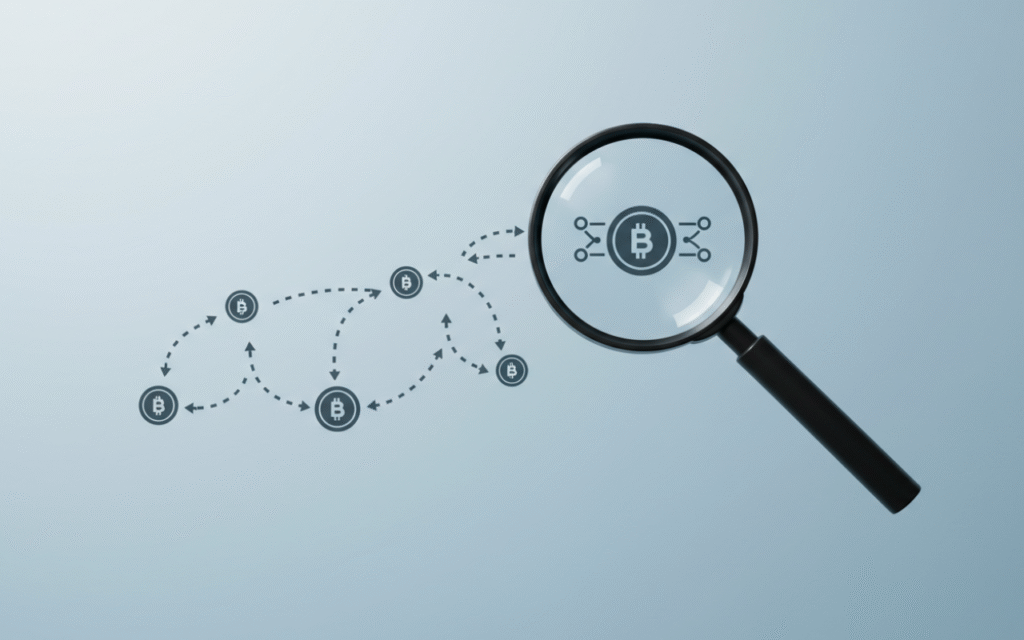Hello, fellow crypto enthusiasts! Whether you’re a seasoned investor or a curious newcomer to the world of digital currencies, understanding how to track crypto transactions on the blockchain is an essential skill. Fear not, for this blog post will guide you through the process in simple terms, ensuring you can navigate the blockchain with confidence. So, grab a cup of coffee, sit back, and let’s dive into the fascinating world of crypto tracking.

What is the Blockchain?
Before we delve into tracking transactions, let’s quickly revisit what the blockchain is. Think of the blockchain as a digital ledger that records all cryptocurrency transactions. It’s decentralized, meaning no single entity controls it. Instead, it’s maintained by a network of computers (nodes) that verify and record each transaction. This transparency and security are what make blockchain technology revolutionary.
Why Track Crypto Transactions?
→ Tracking transactions can be useful for several reasons:
- Verification: Ensure your transactions have been successfully processed.
- Security: Monitor for any unauthorized activity.
- Tax Reporting: Keep accurate records for tax purposes.
- Investment Analysis: Analyze transaction history to make informed investment decisions.
How to Track Transactions
→ Tracking crypto transactions is easier than you might think! Here’s a step-by-step guide to get you started:
1. Choose a Blockchain Explorer
A blockchain explorer is a tool that allows you to view all transactions on a particular blockchain. There are several explorers available, each tailored to different cryptocurrencies. Some popular ones include:
- Bitcoin Explorer: Blockchain.com
- Ethereum Explorer: Etherscan.io
- Litecoin Explorer: Blockchair.com
→ Simply visit the website of the explorer that matches your cryptocurrency.
2. Find Your Transaction
To find your transaction, you’ll need either the transaction ID (TXID) or your wallet address. The TXID is a unique identifier for each transaction and can usually be found in your wallet or exchange account. Enter the TXID or wallet address into the search bar of the blockchain explorer. This will display all relevant transaction details.
3. Understand Transaction Details
→ Once you locate your transaction, you’ll see several pieces of information:
- Status: Indicates whether the transaction is confirmed or pending.
- Block Number: Shows which block contains your transaction.
- Timestamp: Displays when the transaction was processed.
- Sender and Receiver Addresses: Lists the involved wallet addresses.
- Amount: Specifies how much cryptocurrency was sent.
4. Monitor Transaction Confirmations
For a transaction to be completed, it must be confirmed by the network. The number of confirmations required can vary depending on the cryptocurrency and exchange. Typically, more confirmations mean higher security. You can monitor these confirmations directly on the blockchain explorer.
5. Stay Secure
While tracking transactions is straightforward, always prioritize security. Use reputable explorers and ensure your computer and network are secure to prevent any unauthorized access to your information.
Additional Tips
- Bookmark Your Explorer: Save time by bookmarking your favorite blockchain explorer for quick access.
- Use Mobile Apps: Many explorers offer mobile apps for tracking transactions on-the-go.
- Explore Advanced Features: Some explorers provide additional features like portfolio tracking and alerts for suspicious activity.
Conclusion
Tracking crypto transactions on the blockchain doesn’t have to be daunting. With the right tools and a bit of practice, you’ll be navigating the digital ledger like a pro in no time. Remember, knowledge is power in the world of cryptocurrency, so take advantage of these resources to enhance your crypto experience.
Thank you for joining me on this journey through the blockchain! Feel free to share this guide with your friends who might also be curious about tracking their crypto transactions. Happy tracking, and may your investments be fruitful.


